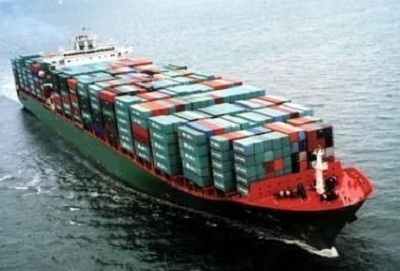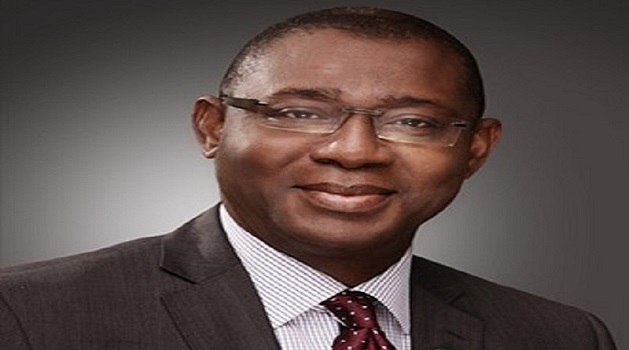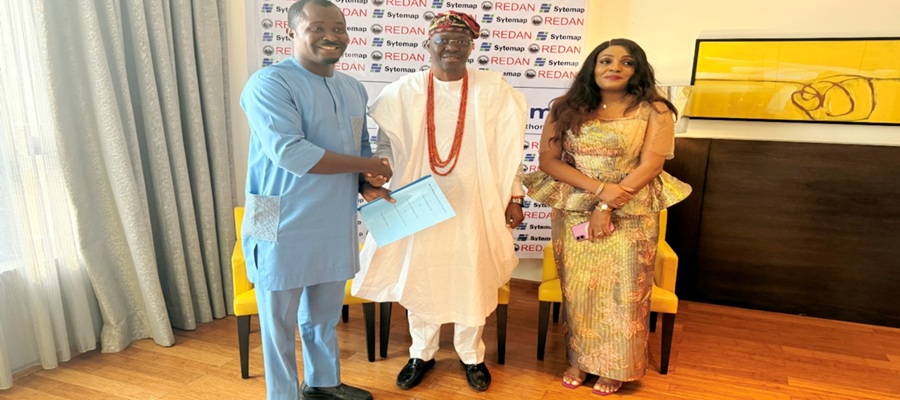General News
Vessels Above 232.33 Meters Now Visit Nigerian Ports-NPA

Larger vessels of above 232.33 meters with capacity of 4,500 TEUS requiring draught of 13.5 meters have started visiting the Nation’s seaports, according to third quarter report 2013 channel management, cargo throughput, ship and gross tons report made available to Nigeria CommunicationsWeek by the Nigerian Ports Authority (NPA).
NPA said that the development has provided shipping companies with a high level of efficiency and economic space which has enhanced their turnover and turnaround time.
Generally, stakeholders and shipping companies have confirmed that the channel management and conservancy function of the Authority has continued to improve.
The Analysis showed that most of the ports recorded increase in the Gross Registered Tonnage mainly due to the constant capital and maintenance dredging of the channels at the nation’s ports by the Lagos Channel Management (LCM) and Bonny channel management companies.
Habib Abdullahi, managing director of NPA, said that: “The Volume dredged from 2006 to date by the LCM is 53,583,546m3 while a total of 24 numbers of critical wrecks have been removed.. This provides shipping companies the economy of space, which enhances their turnover.
“The Volume dredged by BCC from 2006 to date is 43,537,000m3 while 14 Wrecks has been removed.
“Bonny channel from its previous 12.50 meters draught has been deepened to its present 14.30 meters increased its width from 215 meters to 230 meters.
“The successful wreck removal campaign being undertaken by the Authority also ensured safe navigation of vessels and protection of marine environment amongst other economic benefits”.
He added that Port reforms has resulted in healthy competition as there has been an intensified effort by the terminal operators to procure cargo handling equipment and upgrade of the various terminals while the Authority has continued to provide common user facilities needed to improve port operations.
Ship And Gross Tons Index
Apart from crude oil terminals, 1,366 ocean going vessels with a total Gross Registered Tonnage (GRT) of 34,640,530 gross tons called at Nigerian Ports in the 3rd Quarter of this year (2013).
Lagos Port Complex (LPC) recorded a GRT of 9,263,180 gross tons showing an increase of 12.3 per cent over the 3rd quarter of 2012 figure 8,250,315 gross tons while 369 ocean going vessels were handled at the Port within the period.
Rivers Port complex recorded a total GRT of 1,371,846 gross tons, reflecting a decrease of 11.2 per cent as against 1,526,002 achieved in the 3rd quarter of 2012, with 108Ocean going vessels at the end of the 3rd quarter.
The Onne Port complex recorded a Gross registered tonnage of 9,709,984 gross tons, 15.7 per cent decline compared with 11,238,781 gross tons, leaving the port with 219 ocean going vessels in the period under review.
Calabar Port complex recorded a GRT of 751,553 gross tons showing a growth of 15 per cent over 653, 077 recorded in the corresponding period of 2012. It also handled 35 vessels within the period under review.
In a related development, the Delta Port Complex handled a GRT of 2,346,612 showing an increase of 184 per cent over the 2012 3rd quarter figure of 823,595 gross tons, with 94 vessels handled.
Cargo Throughput
Meanwhile, cargo throughput of 19,849,258 million metric tonnes of cargo was handled showing an increase 2.6% over the 2012 3rd quarter figure of 19,340,901 Million metric tonnes excluding crude oil terminals.
Available statistics shows that the containerized cargo throughput handled amounted to 3,559,453 million metric tonnes, “showing an increase of 12.3per cent over the 2012 3rd quarter figure of 3,168,412million metric tonnes”.
The total Liquefied Natural Gas (LNG) shipment handled in the period under review amounted to 4,859,453 million MT showing a decrease of 20per cent from the 2012 3rd quarter figure of 5,828,281MT.
“The Refined Petroleum shipment handled was 4,804,184MT showing a growth of 24 per cent over the 3rd quarter of 2012 figure of 3,869,923MT.
“A total of 76,598 units of Vehicles were handled in the period under review showing an increase of 13 per cent over the same period of 2012 figure of 67,804 units
“Dry Bulk cargo handled at the Ports in the 3rd quarter of 2013 amounted to 2,585,902 MT”.
General Cargo handled at the ports in the 3rd quarter of 2013 amounted to 2,977,347MT indicating a decline of 16 per cent from the 2012 3rd quarter figure of 3,466,311MT.
Thus, reports from the quarterly update of information of developments at the different terminals “indicate appreciable facility upgrades and acquisition of State of the Art container handling equipment by the terminal operators which ensured quick container handling operations and reduced cargo dwell time.
NPA added that its recent research revealed that generally each port is being shaped by the market forces dictated by the commodity demand and by the particular port user.
“Import in Onne for general cargo has since reduced by 30 per cent in total throughput but has been largely compensated for an increase of 60 per cent of gas.
“Lagos port complex is the only port that has maintained its traditional cargo morphology but with bias for containerization as palletized cargo is gradually giving way to this new global trend.
“Between 2003- till date Nigerian Ports Authority ports have experienced about 115 per cent growth. A close examination on this progress show that we do not handle transhipment and transit cargo, all cargoes are captive and Nigeria destined.
“It therefore shows that petroleum product liberalization, growth in Gross domestic product (GDP) and the transformation agenda resulting in increase in construction works have had an unprecedented economic impact on the port industry.
“Also the consistent effort by the Nigerian Ports Authority in fulfilling its obligation on one part and the terminal operators on another and with the provision of enabling environment by the Federal Government of Nigeria under Dr Goodluck Jonathan will further encourage investors’ confidence in the Port sector”.
It is pertinent to note that the improvements have continued to be sustained as reflected on the parameters when compared to same period in 2012.
General News
Woherem Proposes Pragmatic Roadmap to End Terrorism and Banditry in Nigeria

Dr. Evans Woherem, an award-winning African technology researcher, analyst, and writer, has proposed a comprehensive and implementable strategy to end terrorism, banditry, and criminal violence in Nigeria, warning that the country’s prolonged insecurity has reached a critical point that demands urgent, coordinated action.

Titled “A Comprehensive Strategy for Ending Terrorism, Banditry, and Criminal Violence in Nigeria: A Pragmatic, Multi-Layered, and Implementable Framework,” the paper presents a holistic roadmap designed to reverse more than a decade of escalating violence that has claimed thousands of lives, displaced communities, weakened local economies, and eroded public trust in governance.
According to him, insecurity has become deeply entrenched in everyday life across the country. “Terrorism, banditry, and criminal violence have become so commonplace that they now dominate daily conversations among Nigerians,” Dr. Woherem noted, adding that while the crisis is most acute in the North-East, North-West, and North-Central regions, “its effects are now being felt even in the southern parts of the country.”
Citing the 2025 Global Terrorism Index, which ranks Nigeria sixth globally in terms of terrorism impact, Dr. Woherem described the ranking as “a sobering statistical confirmation that terrorism still weighs heavily on the Nigerian state.”
The paper traces the roots of the crisis to the emergence of Boko Haram in 2009 and the subsequent rise of splinter groups such as ISWAP. It recalls high-profile incidents including the 2014 abduction of schoolgirls in Chibok, the Dapchi and Kankara kidnappings, and a series of mass abductions and attacks on schools and places of worship recorded in 2025.
Dr. Woherem observed that banditry, largely driven by ransom payments, “has spread across the entire nation, creating fear, weakening productivity, and pushing millions of households deeper into poverty.”
While acknowledging the role of military action, the author cautioned against relying on force alone. “Nigeria cannot defeat insurgency and violent crime through arms and ammunition alone,” he said. “Any sustainable solution must confront the internal conditions that allow insecurity to thrive.”
Among the key drivers identified in the paper by Dr. Woherem, are porous borders, arms proliferation, youth unemployment, economic stagnation, and persistent conflicts over land and resources, challenges Dr. Woherem stressed can be addressed through “a deliberate, intelligence-led, and whole-of-society approach.”
At the heart of the proposed framework, Woherem noted, is a call for intelligence-driven security operations, including the establishment of a National Counter-Insurgency and Intelligence Fusion Centre. “Security operations must be guided by accurate, actionable intelligence rather than fear-led mass actions that often harm civilians and undermine public trust,” he stated.
The paper also advocates comprehensive policing reforms, including the creation of constitutionally backed state police systems supported by a more specialized federal police structure. “Nigeria’s over-centralised policing model is structurally incapable of effectively addressing widespread criminality across such a vast and diverse country.”
Recognising the realities at the grassroots, Woherem calls for the formal regulation of community-based security groups, and noted that “ignoring vigilante groups is dangerous, and banning them outright is unrealistic,” but stressed that their roles must be clearly defined, regulated, and subject to strict oversight.
On border security, particularly in the Lake Chad Basin, the author warned that instability in neighbouring countries continues to fuel Nigeria’s insecurity. “No permanent solution is possible without deep regional cooperation,” he said, advocating an Integrated Border Management system supported by joint operations with neighbouring states.
The paper places strong emphasis on prevention through economic inclusion, youth employment, and skills development. “Jobs and income remain the most powerful tools for preventing recruitment into violent groups,” Dr. Woherem asserted, adding that immediate livelihood opportunities significantly weaken the appeal of extremist narratives.
He also called for structured deradicalisation and reintegration programmes, noting that “a humane, community-accepted process is essential for breaking cycles of violence and preventing relapse into extremism.”
Dr. Woherem further emphasised the need for governance reforms and accountability in the security sector. “Without transparency, oversight, and institutional integrity, even the best security strategies will fail,” he warned.
The white paper outlines a phased implementation plan from 2025 to 2030, beginning with intelligence fusion, pilot state police initiatives, community security registration, drone surveillance, and financial crackdowns on terror networks, before expanding into nationwide reforms and long-term consolidation.
Concluding, Dr. Woherem expressed cautious optimism about Nigeria’s future. “Nigeria can overcome this prolonged phase of insecurity,” he said, “but only through political will, coordinated institutions, and the active participation of society.”
He added that the proposed framework offers “a realistic pathway to restoring security, rebuilding public trust, and unlocking Nigeria’s vast human and economic potential.”
General News
REDAN Seals Landmark MoU, Validates Sytemap’s Real Estate Infrastructure

In a market where less than 3% of land is formally registered and property fraud remains systemic, infrastructure, not apps, is becoming the defining battleground for real estate innovation.

L-R: Ndifreke Ikokpu, COO, Sytemap, HRM Oba Akintoye Adeoye, President REDAN & Cholatte Odunlade-Akeji, Director, RightHome
That reality came into sharp focus on December 18, 2025, as the Real Estate Developers Association of Nigeria (REDAN) signed a Memorandum of Understanding (MoU) with Sytemap Technologies Limited, signaling a major industry endorsement of Sytemap’s land and real estate transaction infrastructure.
The partnership centers on RightHOME, a jointly developed digital real estate platform powered by Sytemap’s secure cloud infrastructure, mapping systems, transaction monitoring, and fraud-prevention architecture, with REDAN driving ecosystem adoption through its nationwide developer network.
Nigeria’s real estate sector processes transactions worth trillions of naira annually, yet remains heavily manual, fragmented, and vulnerable to disputes. Industry data suggests unresolved title issues alone lock up ₦36 trillion in dead capital, limiting access to finance and slowing development.
“This MoU represents a shift from fragmented digitization to coordinated infrastructure,” said Nnamdi Uba, CEO at Sytemap. “When the industry body itself aligns around shared standards, verification, and technology, innovation can finally scale responsibly.”
Under the agreement:
· REDAN will onboard registered developers and promote adoption of the platform as a trusted digital channel.
· Sytemap will deliver secure hosting, real-time monitoring, escrow-aligned transaction workflows, and compliance with Nigeria’s data protection regulations.
· Joint standards will be developed for digital verification, transparency, and asset mapping.
From a technology perspective, the partnership reflects a growing consensus that solving African real estate challenges requires deep infrastructure, not surface-level marketplaces. Fraud detection, uptime reliability, auditability, and regulatory alignment, areas often overlooked in proptech, are central to Sytemap’s approach.
HRM Oba Akintoye Adeoye, representing REDAN noted, “This collaboration allows developers to operate in a system where trust is embedded, not assumed. That is critical for long-term growth.”
For the broader tech ecosystem, the MoU stands out as a rare example of industry-led validation, where a national association formally aligns with a technology provider to modernize an entire sector.
Ndifreke Ikokpu, COO at Sytemap signed on behalf of Sytemap while Cholatte Odunlade – Akeji, CEO of RightHome signed on behalf of the Special Purpose Vehicle.
As pressure mounts to unlock housing finance, attract institutional capital, and reduce transaction risk, the REDAN–Sytemap partnership positions digital land infrastructure not as an optional upgrade, but as a foundational requirement for the future of real estate in Nigeria.
General News
Oyedele Warns Delay in Tax Reforms Will Keep 98% of Workers Overtaxed

Taiwo Oyedele, Chairman of the Presidential Fiscal Policy and Tax Reforms Committee, has cautioned that failure to implement Nigeria’s new tax laws by January 1, 2026, would leave the vast majority of workers and businesses at a disadvantage.

Taiwo Oyedele
Speaking on Channels Television’s The Morning Brief, Oyedele said postponing the reforms would mean that “the bottom 98 per cent of workers remain overtaxed,” while businesses continue to grapple with multiple taxation and miss out on exemptions.
He added that small and unprofitable enterprises would still be subject to minimum taxes, and hidden VAT charges would keep driving up the cost of essentials such as food, healthcare, and education.
His comments come amid calls by former Vice President Atiku Abubakar, Labour Party’s 2023 presidential candidate Peter Obi, and several civil society groups for a suspension of the reforms. Oyedele argued that rather than halting implementation, specific areas of concern should be identified and corrected.
“So, we need to be clear about what we are asking for,” he said. “Even if it is established that there have been substantial alterations to what the National Assembly passed, my view will be to identify those provisions… and go ahead to implement the law as passed by the NASS, while you address the issues as to how they got in there in the first place.”
Oyedele acknowledged that even the version passed by lawmakers contained sections requiring amendment, citing issues with referencing and definitions.
He also addressed controversy over alleged discrepancies between the gazetted laws and those approved by the National Assembly, noting that without access to the officially harmonised bills certified by the clerk, it was difficult to determine differences.
He pointed to Section 41(8), which initially appeared to require a 20 per cent deposit but was later excluded from the final version, stressing that some draft materials circulating in the media did not originate from the House committee. “I think we should allow them do the investigation,” he said.
President Bola Tinubu has already signed the four tax reform bills into law, describing them as the most significant overhaul of Nigeria’s tax system in decades.
The reforms — the Nigeria Tax Act, Nigeria Tax Administration Act, Nigeria Revenue Service (Establishment) Act, and Joint Revenue Board (Establishment) Act — are scheduled to take effect on January 1, 2026, under a unified Nigeria Revenue Service.

 News3 days ago
News3 days agoUS Begins Partial Visa Ban on Nigerians January 1

 E-Financial2 days ago
E-Financial2 days agoFIRS says NIN, CAC Numbers to Serve as Tax IDs from 2026

 News3 days ago
News3 days agoGlo Extends Christmas Greetings, Urges Unity and Care for Others

 News3 days ago
News3 days agoDPLAN Threatens NDPC with Legal Action for Setting aside $32.8m Meta Fine

 Telecom2 days ago
Telecom2 days agoOyedele Dismisses Claims Bank Accounts Without TIN Will Be Frozen

 E-Financial2 days ago
E-Financial2 days agoAfDB Group Mobilises Global Private Capital to Close Africa’s Financing Gap

 E-Financial3 days ago
E-Financial3 days agoNOVA Bank Opens Regional Office in Owerri

 E-Financial2 days ago
E-Financial2 days agoFidelity Bank Bolsters Ikoyi Fire Station with Hoses, Pumps for Safer Communities


























